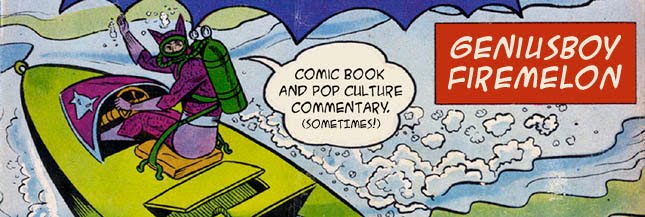I
wrote my upcoming "When Words Collide" column as kind of a feature
article about Charles Forsman and his new microcomics publishing
venture. Well, I suppose it's about more than that. It's like
Forsman's comic book life story, and everything that led up to him
working in Hancock, writing and drawing books for Fantagraphics, while
he pumps out Risograph-printed minicomics by a bunch of talented
artists. Look for it on Monday at CBR.
But our conversation led in a couple of directions that didn't end up fitting into the column, so here are some outtakes that didn't make it into my piece. First, Charles talking about his process:
But our conversation led in a couple of directions that didn't end up fitting into the column, so here are some outtakes that didn't make it into my piece. First, Charles talking about his process:
It usually does start with writing, usually in the sketchbook. It starts with paragraphs of what’s going to happen, maybe. Then I break that down into chapters, with further description, and then I use that one page in a sketch book, for TEOTFW, and I work very teeny tiny in there.
A lot of cartoonists draw and redraw and do several drafts, full size…and I’ve been more laborious with my work in the past…but with this I’m more worried about just telling the story and not drawing fancy.I’ll do thumbnails so tiny no one else can read them, and I’ll put the dialogue outside. Jason Lutes shared his process when he was at CCS. He has two little boxes for a page, on one sheet of paper, and he’ll write the dialogue outside. So that’s how I’ve been working recently.
Even the original art is small to keep things quick.
It always changes from project to project. Sometimes I’m loose, and sometimes I need more structure, but that sort of idea is what I stick to. Quick thumbnails. Because I feel it keeps the spontaneity. I don’t like to labor over it too much, because I feel it makes things too stiff.
I personally can’t read stuff on the screen, at my computer.The way I tell stories, I need that page. I have so much trouble just determining a trim size I’m going to use. With a computer there’s so many options. I could do full color…it just feels too unlimited. I respond to limitations a lot better. It’s almost like a challenge to tell what I want to tell and do what I want to do in eight pages.The thing that I discovered…serialization is just -- the type of comics I do, everyone’s worried about the graphic novel, with one big story….small publishers aren’t printing them any more. Nobody’s buying them. It wasn’t something I even experimented with, until I accidentally did it with this series. All of a sudden, I was having cliffhangers, and it was really fun. And people were coming back month in and month out. I know serialization still goes on with the superhero comics, but it was something I felt like I had to rediscover for myself. It seemed like something that was gone from my comics scene. And I love it. It makes me sad that it’s not around anymore.
There’s that romantic idea of comics being a throwaway artform, that I still kind of like. I like that it’s just a dollar and that it’s on copy paper and it’s not something to really cherish. I really respond to that, that you can tell a great story without high production values.
I really like what Charles and his friends are up to, and Oily Comics is definitely worth checking out.



No comments:
Post a Comment